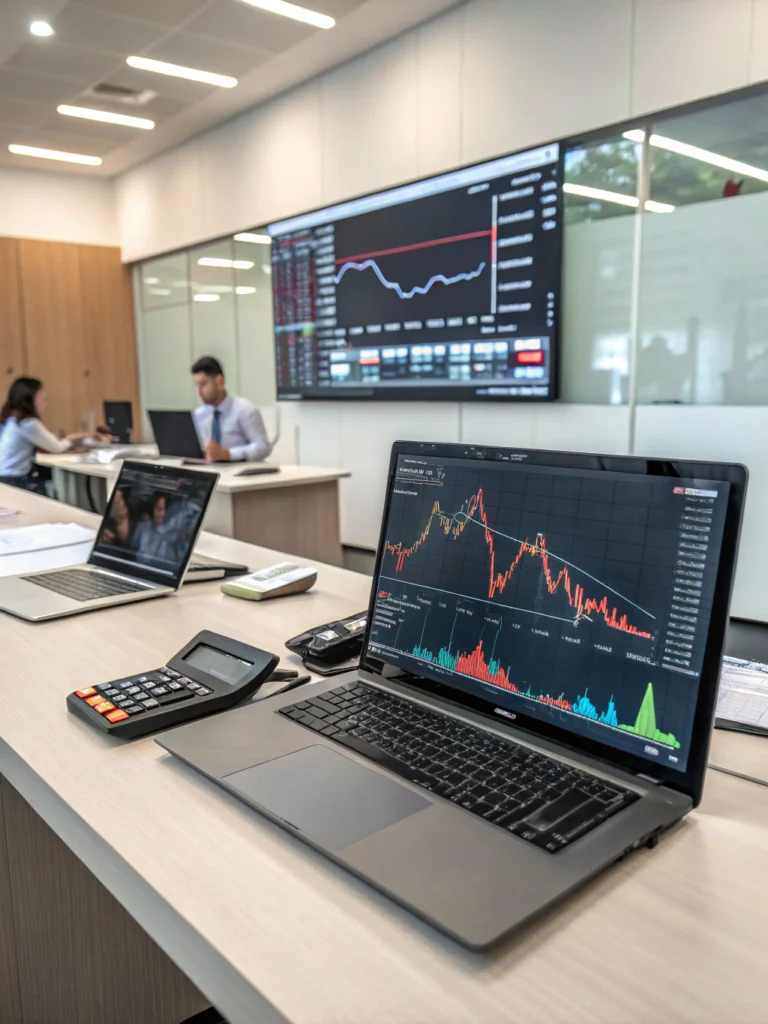Table of Contents
Ever wondered if algorithms could make you a millionaire? The allure of automated profits draws many into the world of what is quant trading – a space where math, programming, and finance collide. But is it really the golden ticket to riches? Dive in as we explore the core of quant trading and unearth two critical risks that could wipe out your investments faster than you can say “market crash.”
Key Concepts Overview
What is quant trading, you ask? Simply put, it’s using quantitative analysis – mathematical and statistical modeling – to identify and execute trading opportunities. Forget gut feelings; quant traders rely on data.
Here’s a breakdown:
- Algorithms are King: Forget staring at charts for hours. Quants design algorithms that automatically execute trades based on pre-defined rules. Think of it as a highly sophisticated autopilot for your investments.
- Data, Data Everywhere: Enormous datasets are the lifeblood of quant trading. Historical prices, economic indicators, news sentiment – anything that might influence market movements gets crunched and analyzed.
- Statistical Modeling is Key: Quants use statistical techniques like regression analysis, time series forecasting, and machine learning to unearth patterns and predict future price movements. They aren’t just reading tea leaves; they’re building complex simulations.
- High Frequency Trading (HFT): A subset of quant trading, HFT focuses on executing a large number of orders at incredibly high speeds. Think milliseconds. This is where the real “rocket science” happens.
Example: Imagine you believe that stocks with a low price-to-earnings (P/E) ratio tend to outperform the market. A quant trader would create an algorithm to automatically buy stocks meeting this criterion, based on real-time data feeds, and sell them when they reach a pre-determined profit target. No emotion, just cold, hard logic (supposedly).
Statistics and Insights
Quant trading is a growing force. A recent report by Greenwich Associates suggests that quant funds now manage over $1 trillion in assets. Here’s why it’s gaining traction:
- Potential for Higher Returns: Backtesting (testing algorithms on historical data) often shows the potential for significantly higher returns compared to traditional investment strategies. However, past performance is not indicative of future results. Remember that.
- Emotional Detachment: Algorithms aren’t swayed by fear or greed, meaning they can execute trades more rationally than humans. No panic selling here (in theory).
- 24/7 Trading: Algorithms can trade around the clock, capitalizing on opportunities in global markets.
However, not all is sunshine and roses. According to a study by BarclayHedge, while some quant strategies outperform, the median quant fund performance often lags behind the S&P 500.
Actionable Steps or Winning Strategies
While the promise of automated profits is tempting, successful quant trading requires a rigorous approach. Here are actionable steps to consider:
Step 1: Master the Fundamentals
Don’t even think about coding an algorithm until you have a solid grasp of financial markets, statistical analysis, and programming (Python is a popular choice). Brush up on your math skills—calculus, linear algebra, and probability are your friends!
- Pro Tip: Start with online courses on platforms like Coursera or edX.
Step 2: Data Acquisition and Cleaning
Garbage in, garbage out. Ensure your data is accurate, reliable, and comprehensive. This often means paying for high-quality data feeds. Cleaning and normalizing data is crucial for avoiding bias and spurious correlations.
- Warning: Beware of “look-ahead bias” – using information that wasn’t actually available at the time you would have been trading.
Step 3: Develop and Backtest Your Algorithm
Build your algorithm based on a specific trading strategy (e.g., mean reversion, momentum trading). Rigorously backtest it on historical data to assess its performance and identify potential weaknesses.
- Caution: Overfitting is a major pitfall. Don’t optimize your algorithm so perfectly to historical data that it fails in the real world.
Step 4: Risk Management is Paramount
Implement strict risk management rules. Define stop-loss orders, position sizing limits, and maximum drawdown thresholds. Quant trading can be highly leveraged, so even small losses can quickly snowball.
- Bonus Nugget: Consider using a “portfolio approach” – diversifying across multiple uncorrelated quant strategies to reduce overall risk.
Step 5: Live Trading and Monitoring
Start with small capital and carefully monitor your algorithm’s performance in a live trading environment. Be prepared to adjust your strategy as market conditions change.
Potential Challenges and How to Overcome Them
Challenge 1: Overfitting. Overfitting algorithms to historical data can make them brittle and ineffective in live trading. The solution lies in robust validation techniques like out-of-sample testing, walk-forward analysis, and Monte Carlo simulation.
Challenge 2: Data Bias. Algorithmic trading inherits a high degree of data dependency. Data bias occurs when the data used to train the model misrepresents real-world scenarios or exhibits patterns that lead to skewed predictions. The model trained upon biased data will produce biased outcomes. The models may appear correct on historical data but ultimately lead to financial losses due to exposure to market volatility.
- Data Bias Solution: Implement stratified random sampling, data augmentation, and algorithmic fairness metrics to identify and mitigate bias. Continuously monitor model performance across different market regimes to detect and address emerging bias issues.
Challenge 3: Black Swan Events. Unexpected events (like a global pandemic) can shatter even the most sophisticated quant models. No amount of historical data can prepare you for something completely unprecedented.
- Black Swan Solution: Incorporate scenario analysis and stress testing to evaluate how your algorithm would perform under extreme conditions. Consider using dynamic position sizing to reduce your exposure during periods of high uncertainty.
Case Studies or Real-World Examples
- Renaissance Technologies: Arguably the most successful quant hedge fund in history, Renaissance Technologies, founded by James Simons, uses sophisticated mathematical models to trade in a variety of markets. Their flagship Medallion fund is famously closed to outside investors and boasts staggering returns.
- Knight Capital Group Flash Crash (2012): A faulty algorithm at Knight Capital Group caused a massive surge in trading activity, resulting in a $440 million loss in just 45 minutes. This highlights the risks of poorly designed and tested automated trading systems.
Additional Resources
- Books: Advances in Financial Machine Learning by Marcos Lopez de Prado, Algorithmic Trading: Winning Strategies and Their Rationale by Ernest P. Chan
- Platforms: Quantopian (for algorithm development and backtesting), Bloomberg Terminal (for data and analytics)
- Articles to build your wealth: what is quant trading
Conclusion
What is quant trading? It’s a powerful tool, but like any tool, it can be dangerous if wielded improperly. By understanding the underlying concepts, mitigating the risks, and continuously learning, you can increase your chances of success in this exciting and rapidly evolving field.
Ready to take the plunge into the world of algorithmic trading? Share this article with your network and let’s discuss the future of finance! Or, perhaps you’d like to delve deeper into how to prepare your portfolio for market volatility? Check out our related post on building wealth when markets crash [link to relevant article, if applicable].
FAQs
Q: Is quant trading only for PhDs?
A: While a strong math and programming background is essential, you don’t necessarily need a PhD. Many successful quant traders come from diverse fields like computer science, engineering, and even physics. Focus on gaining practical experience and building a strong portfolio of trading strategies.
Q: How much capital do I need to start quant trading?
A: It depends on your risk tolerance and trading strategy. However, it’s generally advisable to start with a small amount of capital – just enough to test your algorithms in a live trading environment. You can always scale up once you’ve proven your strategy’s profitability.
Q: Can I become rich overnight with quant trading?
A: No. Quant trading, like any form of investing, involves risk. There are no guarantees of profit, and you can lose money. Be patient, disciplined, and focus on building a long-term track record of consistent performance.

